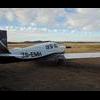Cleaning a fuel tank.
-
Members Online
- Air pirate
- Jason 1996 MSE
- ReboTim
- varlajo
- Larry
- 201Steve
- nrgries
- EricJ
- Rick Junkin
- KLRDMD
- Jblanton
- Jarerh
- Chris_H
- Gilt
- Yetti
- kortopates
- sheriffburrell
- Ragsf15e
- Hank
- 201er
- Igor_U
- DXB
- prestonvanloon
- Danb
- Fix
- Justin Schmidt
- Dan2112
- Niko182
- hazek
- skykrawler
- Jeph357
- TCC
- Fritz1
- TheAv8r
- eman1200
- Blaze
- Scooter
- Guy123
- PeytonM
- ETXflyboy_f14
- Andy95W


Recommended Posts
Join the conversation
You can post now and register later. If you have an account, sign in now to post with your account.